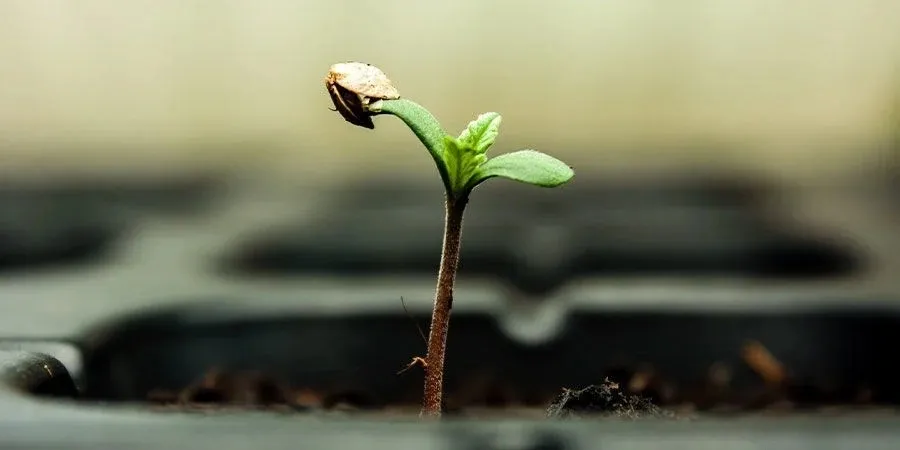Cannabis cultivation has come a long way from its clandestine origins to a legitimate and rapidly growing industry. Central to the success of any Indian cannabis seed bank cultivation venture are the seeds—the building blocks of genetic potential. High-quality cannabis seeds are the foundation upon which growers can achieve robust yields, potent cannabinoid profiles, and unique flavors. In this article, we will delve into the fascinating world of cannabis seed breeding, genetics, and hybridization, uncovering the scientific principles that drive the creation of premium cannabis strains.

The Basic of Cannabis Seeds Breeding
Cannabis breeding is an intricate process that involves manipulating the genetic makeup of the plant to develop desirable traits. Breeders carefully select parent plants with specific characteristics, such as high THC or CBD content, resistance to pests, or unique flavor profiles. These selected plants serve as the genetic donors for creating the next generation of cannabis seeds.
- Selecting Parent Plants:
Breeders identify two parent plants with complementary traits that they want to combine. For example, one parent might have high THC content, while the other has a pleasant aroma.
Understanding the genetic lineage of the parent plants is crucial to predicting the outcomes of the breeding process. Advanced genetic analysis tools have made this process more precise than ever before. - Pollination:
Once the parent plants are chosen, breeders carefully collect pollen from the male plant and use it to fertilize the female plant’s flowers. This process can be controlled to ensure specific genetic traits are passed on to the offspring. - Crossbreeding:
Crossbreeding involves combining strains with different genetic backgrounds to create a hybrid with a unique set of characteristics.
Breeders aim to produce offspring that exhibit the best traits from both parent strains while minimizing undesirable attributes. - Stabilization:
After initial hybridization, multiple generations of the new strain are grown and observed to stabilize the genetics. This ensures that the offspring consistently display the desired traits.
The Science of Creating New Genetics

Creating new genetics in cannabis is a complex scientific endeavor that requires an in-depth understanding of genetics, botany, and horticulture. It involves a combination of traditional breeding techniques and cutting-edge genetic analysis tools.
- Genetic Analysis:
Modern genetic analysis tools, such as DNA sequencing and marker-assisted breeding, allow breeders to identify specific genes responsible for desired traits.
By pinpointing these genes, breeders can speed up the breeding process by selecting plants with the desired genes rather than waiting for generations of crossbreeding. - Cloning:
Cloning is a method used to replicate genetically identical copies of a desired plant. This technique is often employed to preserve exceptional genetics and produce consistent results. - Backcrossing:
Backcrossing is a strategy where a hybrid plant is bred with one of its parent strains. This helps maintain the desired traits while reducing the influence of the other parent’s genetics. - Mutagenesis:
Some breeders use mutagenesis techniques to induce genetic mutations, creating unique variations within a strain. This can lead to novel traits and characteristics.
Crossing Strains to Create New Hybrids
Hybridization is the art of crossing different cannabis strains to combine their unique qualities. This process can lead to the development of entirely new strains with diverse attributes. Here’s how it works:
- Selecting Parent Strains:
Breeders choose two or more parent strains with distinct characteristics they want to combine. For instance, a breeder might cross a high-THC strain with a high-CBD strain to create a balanced hybrid. - Controlled Pollination:
Breeders ensure that only the selected male plants pollinate the female plants. This controlled pollination prevents unwanted genetics from entering the mix. - Phenotype Selection:
After germination, breeders closely observe the offspring’s growth and development. They select plants with the desired traits and discard those that don’t meet their criteria. - Testing and Stability:
Breeders subject the selected hybrids to rigorous testing to ensure stability and consistency in traits like THC/CBD content, aroma, and yield.
Multiple generations of the hybrid may be grown and tested to refine the strain and achieve desired characteristics.
The science behind high-quality cannabis seeds is a blend of traditional breeding techniques and modern genetic analysis tools. Cannabis breeders carefully select parent plants, manipulate genetics, and create new hybrids to produce strains that offer unique flavors, potent cannabinoids, and desirable growth characteristics.
As the cannabis industry continues to evolve, so does our understanding of cannabis genetics, opening up exciting possibilities for the development of novel and innovative strains that cater to the diverse preferences of consumers and the needs of medical patients. With each new generation of seeds, the potential for improved cannabis varieties and more effective medical treatments continues to grow.

